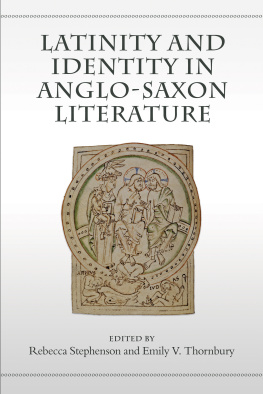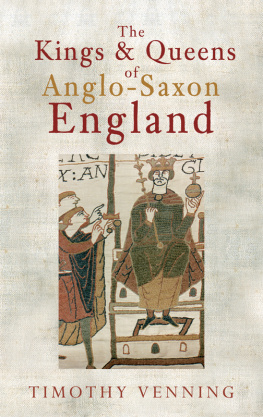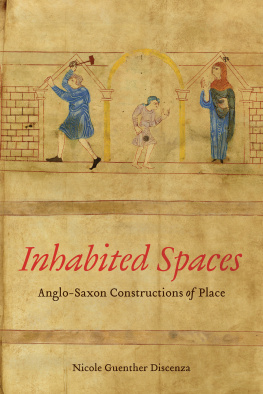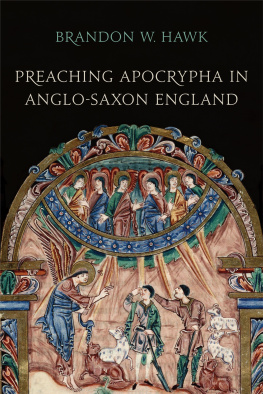Contents
MICHAEL W. HERREN, YORK UNIVERSITY
SCOTT DEGREGORIO, UNIVERSITY OF MICHIGAN, DEARBORN
EMILY V. THORNBURY, UNIVERSITY OF CALIFORNIA, BERKELEY
CHRISTINE RAUER, UNIVERSITY OF ST ANDREWS
JONATHAN DAVIS-SECORD, UNIVERSITY OF NEW MEXICO
REBECCA STEPHENSON, UNIVERSITY COLLEGE, DUBLIN
DAMIAN FLEMING, INDIANA UNIVERSITYPURDUE UNIVERSITY, FORT WAYNE
LESLIE LOCKETT, THE OHIO STATE UNIVERSITY
ELIZABETH M. TYLER, UNIVERSITY OF YORK
KATHERINE OBRIEN OKEEFFE, UNIVERSITY OF CALIFORNIA, BERKELEY
Introduction
Latin, after the collapse of the western Empire, was a language of choice; and though that choice may have seemed more inevitable in some places and periods than in others, it was always heavily laden with emotional and social meaning. We can understand a little of what it meant to choose Latin from descriptions of the alternative possibility: the opposite of the vernacular must be the language of the slavemaster, the foreigner, the cosmopolite; the opposite of the mother tongue, that of the father. And all of these implications were indeed part of the legacy of Latin in the early Middle Ages. But reducing history and linguistic relations to a schematized Oedipal struggle interposes a distorted lens between the past and us. For many years and sometimes still medieval literature has been forced by post-medieval commentators into the highly ethically charged set of binary relations illustrated in the table:
Latin | Vernacular |
Christian | Worldly |
Authoritative | Subversive |
Intellectual | Creative |
Unitary | Multiple |
Collective | Individual |
Masculine | Feminine |
Normative | Queer |
Rigorous | Interesting |
Which side of the table corresponded to good and which to bad has tended to hinge on the temperament and training of the readers and scholars involved.
Perhaps among the most important achievements of the last two generations of medievalists has been to show how badly these dichotomies mischaracterize both Latin and vernacular literature. On the vernacular side, the insights achieved through serious literary attention to devotional and sermon literature, translations, and the construction of authority (to name only a few examples) need not be rehearsed here, although they have transformed the contemporary study of Anglo-Saxon literature. Yet work on Englands early Latin literature has been no less transformative, allowing us to understand this material as both literary art and part of a complex social phenomenon, not simply a set of sources for vernacular texts. This work is integrally part of a broader contemporary trend in recognizing the vibrancy and diversity of medieval Latin across Europe. And so we come, in this volume, to a fresh consideration of what it meant to choose Latin in Anglo-Saxon England.
First, even to native speakers of a Germanic language, Latin did not manifest itself as a homogeneous, timeless, elemental substance. From the beginning of the period to the end, many kinds of Latin were available to the Anglo-Saxons, who then constructed other forms themselves. Aldhelm was the first English author to include such esoteric and Greek-derived vocabulary, and by establishing his prose style as separate from the Irish tradition, he shows us that, even from the beginning of the period, Anglo-Latin authors were acutely conscious of style as a performance of affinities.
Aldhelm himself worked within a set of largely Continental, late antique literary paradigms, but the sensibility through which he filtered this material was unique, and came to be seen by his successors as distinctively English.
Yet Boniface was not simply a literary clone of his West Saxon forebear, as Michael W. Herren shows here in Bonifaces Epistolary Prose Style: The Letters to the English. Through a close study of a wide range of stylistic features alliteration, hyperbaton (including double hyperbaton), chiasmus, pleonasm (including the redundant genitive), rhyming cola, and abstruse lexical items Herren is able to tease out substantive differences between Aldhelms style and Bonifaces. Most importantly, he demonstrates that Boniface adapts his style to connect with a particular audience, a feature which Aldhelm does not share. On the whole, the works Boniface wrote to leaders of the Church were more challenging than those he wrote to Anglo-Saxon kings or women. The responsiveness of his prose to the perceived needs of his audience shows that the Latinity of Bonifaces letters is thus itself part of a dialogue, and tells us something about his understanding of the variegated English society he had left behind.
Latin style, then, was an almost infinitely malleable signifier of identity; and even distinctive, relatively unified styles (like Aldhelms) were perceived as composed of separable, independently usable elements. Continued scholarly attention to the real multiplicity and complexity of Anglo-Latin styles, and their practitioners self-consciousness in constructing and deploying them, will help us better understand literary affinity and development throughout the period. As one example, Alastair Campbell thought that thilwulf, in his poem De abbatibus, was relatively little indebted to the work of his near-contemporary and fellow Northumbrian Alcuin. monastery in Northumbria, not among other vates in Charlemagnes court, and his poem does not leave evidence of the kind of easy supportive relationship with his patron such as Alcuin enjoyed. thilwulfs construction of himself as poeta thus differed substantially both from native traditions and the Carolingian court culture from which he borrowed the title. However, by asserting his own authorship, thilwulf affirms his role in constructing and maintaining his monasterys history; and moreover, by directly referencing his role as poeta, he frees himself both from the historiographical tradition that precedes him and from dependence on episcopal patronage.
thilwulfs self-construction as a poeta is particularly interesting because it illustrates how an aspect of Alcuins poetry which most likely read to contemporaries as modern, even exotic, could be integrated into a poetic persona that was otherwise deeply concerned with a historically conscious, rather inward-focused Northumbrian identity. Throughout the Anglo-Saxon period, we see many other instances in which Latinity is made to simultaneously signal both modernity and historical consciousness: the best-known instance of this is perhaps the Aldhelm revival that accompanied the tenth-century reform of many of the great Benedictine monasteries in the south. As Lapidge showed in his classic article on the Hermeneutic Style, the peculiar Latin vocabulary characteristic of the monastic reformers and their students was largely created through intensive study of Aldhelms writings and of glossaries derived from them.
The lack of a term to describe this style of writing creates a significant lacuna in scholarship, since these were not idiosyncratic writers working by themselves. Rather they were a very specific group of authors working in the late tenth and early eleventh century, nearly all of whom bear some connection to the Benedictine Reform. In these cases, and others developed in this volume (especially by Stephenson, Fleming, and Davis-Secord), this register of Latin demands a particular kind of hermeneutic practice from its readers. To appreciate or even to simply understand this complex and Aldhelm-saturated strain of hermeneutic Anglo-Latin, a tenth-century reader would have to have been a particular kind of person: one who had studied at a reformed Benedictine foundation in England.





